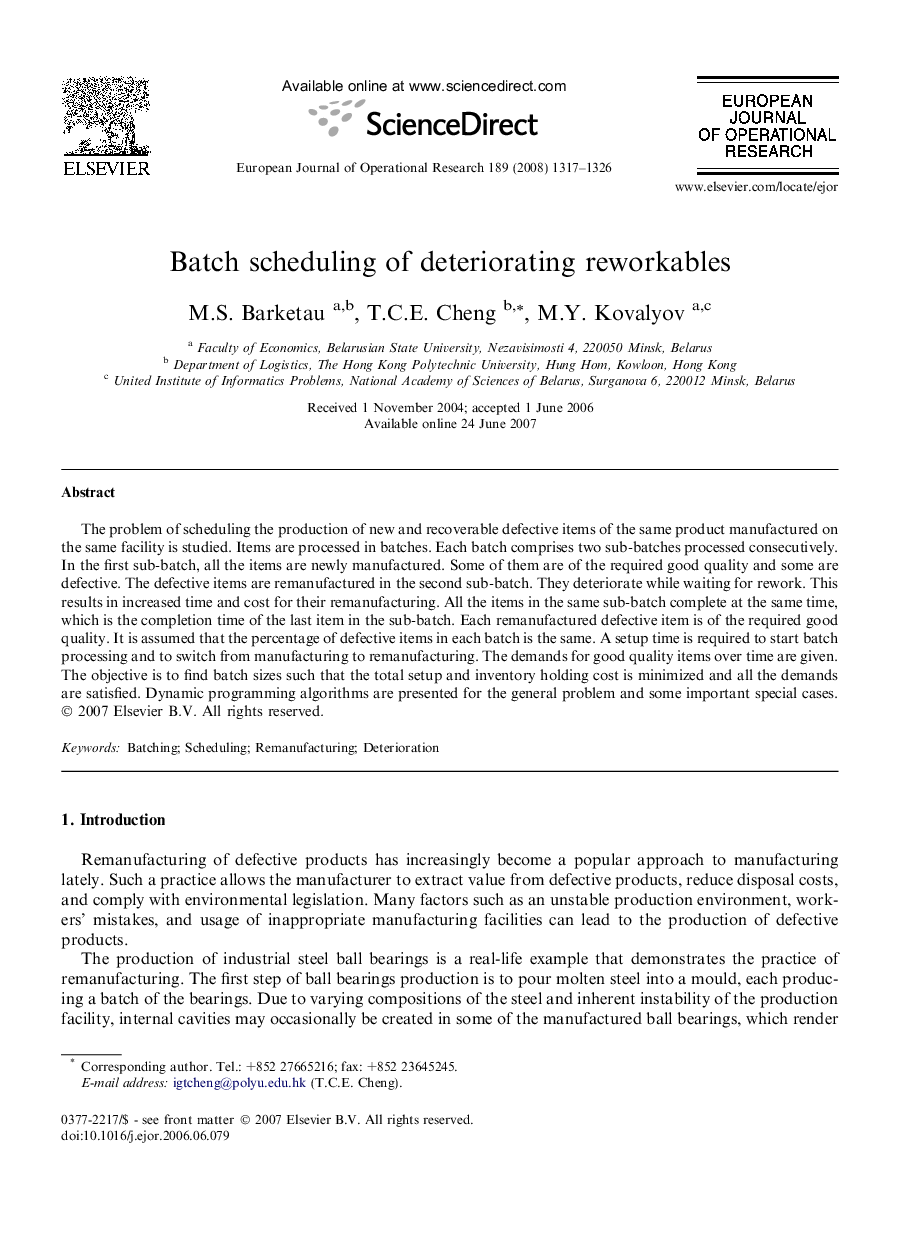| Article ID | Journal | Published Year | Pages | File Type |
|---|---|---|---|---|
| 482036 | European Journal of Operational Research | 2008 | 10 Pages |
The problem of scheduling the production of new and recoverable defective items of the same product manufactured on the same facility is studied. Items are processed in batches. Each batch comprises two sub-batches processed consecutively. In the first sub-batch, all the items are newly manufactured. Some of them are of the required good quality and some are defective. The defective items are remanufactured in the second sub-batch. They deteriorate while waiting for rework. This results in increased time and cost for their remanufacturing. All the items in the same sub-batch complete at the same time, which is the completion time of the last item in the sub-batch. Each remanufactured defective item is of the required good quality. It is assumed that the percentage of defective items in each batch is the same. A setup time is required to start batch processing and to switch from manufacturing to remanufacturing. The demands for good quality items over time are given. The objective is to find batch sizes such that the total setup and inventory holding cost is minimized and all the demands are satisfied. Dynamic programming algorithms are presented for the general problem and some important special cases.
